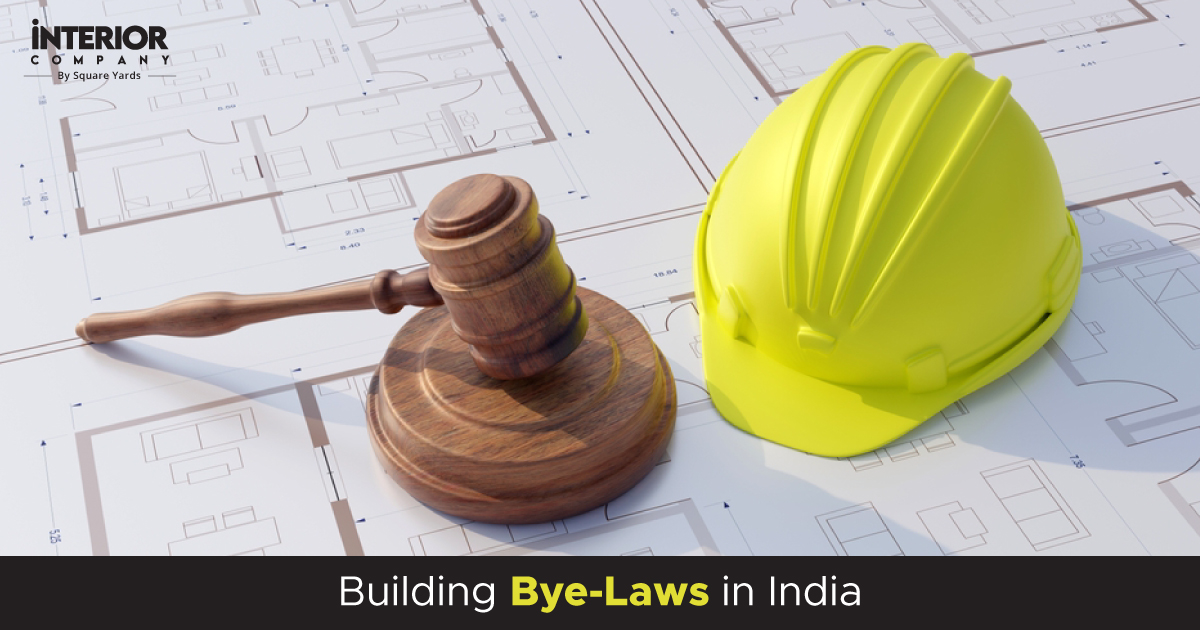Building bye-law norms are set up by the government and framed by a subordinate authority that varies from region to region. It channelises to attain the policies outlined in the Master plans of the cities. In this context, TCPO (Town Country Planning Organisation) revised “Model Building Bye-Laws- 2016” for urban local bodies, development authorities and state governments to give a distinctive Architectural Character to the city.
The Objectives of Building Bye-laws
- To make it easier to pre-plan the building activities, including the irregular development in polluted areas, excessive coverage, forcible encroachment, etc.
- Direct guidelines to the designing Architect or engineer to ensure optimum utilisation of living space.
- Prevents haphazard development without any likeliness to the growth of the area.
- Affirm safety to workers and users in the building against fire, noise, health hazards, and structural failures.
- Addresses health, safety and comfort of users like air, light, ventilation, and other essentials.
Also Read: What is Setback in Residential Buildings
General Information on Building Bye Laws
Building bye-laws were first introduced in 2003 by the Ministry of Urban Development due to the Bhuj Earthquake that occurred in 2001, to attribute to the structural safety of buildings and grant minimum safeguards to the workers and health of the residents. It further offered the specified parameters and engineering mechanisms, including rainwater harvesting and wastewater recycling, easy accessibility for the disabled to public buildings and fire safety. These regulatory norms were distributed to all the State Governments and Union territories. However, concerning recent times keeping up with emerging issues, the norms have taken comprehensive revision under the ‘Model Building Bye Laws 2016’ by the Town and Country Planning Organisation (TCPO) because of the following reasons:
- Increasing Environmental Factors
- Growing Safety and Security measures
- New Innovations and Technological Developments
- Government’s initiative Swachh Bharat Mission
- Emphasises Ease of Doing Business
Some more additional provisions incorporated in the circular are building guidance for natural hazard-prone areas, revitalisation and conservation of heritage sites, safe use of glass in buildings, barricade-free environment for disabled, children and old persons in public buildings and alleviating the effects of electromagnetic radiation on urban areas.
The Draft Model was circulated to Government Agencies, Housing and Urban Development Corporations, State Authorities, and Local Bodies to obtain their comments and suggestions.
Also Check: Types of Brick Masonry for Construction
Main Aspects Covered by the Building Bye-Laws
The considering associations provided initiatives and suggestions that need to be incorporated into the bylaws for the requisition of building development and the construction industry.
- Affordable housing norms
- Update required for the NBC( National Building Code) by BIS (Bureau of Indian Standards)
- Parking loading zones
- Residential and commercial setbacks
- Stipulations and standards for High-rise building
- Code for Green building standards (GRIHA, LEED)
- Sanctioning building plans for ease of doing business
- Basement standards
- Rainwater and Sewage treatment plans
- Update the fire norms
- Provision for safety by considering the stairs and exit ways.
What is the National Building Code?
National Building Code or NBC 2016 is a comprehensive building code, carefully analysed and formulated by BIS, that provides guidelines and regulations for the building constriction industry and economic services, as per Indian Standards. These building codes aim to ensure public safety during construction operations and health and welfare requirements for workers and users. It serves as a model for all the agencies involved in construction work. The key concepts and contents are as follows:
- Administrative regulations
- General building requirements and growth control rules
- Fire safety requirements
- Stipulations regarding building materials
- Structural strength
- Sanitary and plumbing services
- Landscaping and Outdoor structures
- Sustainability
- Construction and Building management.
Salient Features of the 2016 Building Bye-Laws
The characteristics of MBBL- 2016 are given as under:
- Provisioning Safety & Security: This includes structural design safety, prevention measures and proof checking, and disaster management.
- Easy Accessibility: Providing facilities like Access Path/ Walk Way, stairs, lifts, and toilets suitable and safe for children, the elderly, the physically-abled etc.
- Environmental Issues: This ensures to cater sustainability and green buildings and introduces rainwater harvesting, recycling services, solar rooftop installations and more.
- The implication of Swachh Bharat Mission: It entails hygienic sanitation facilities for women and segregated toilet facilities for the general public at large
- Adoption of the Latest technology: Additional provisions for high-rise buildings in structural safety, fire safety, and disaster management.
- Proficiency in Approvals: It includes an integrated approach for online approvals and automated systems of plan scrutiny for commercial building plans.
Importance of Building Bye-laws
The basis for building construction bye-laws looks unaccountable to laymen and even to many officials, as they are based on natural scientific laws, properties of building materials and to avoid inherent hazards of users. But the need for bylaws is essential in India to keep checks on the construction activities both in the public & private sectors. If we lose over them, problems might arise like visual disorders, the traffic becoming uncontrollable, harmful and disturbing living conditions, structural failures, environmental problems etc.
In Conclusion
The importance of enforcing bylaws is to adhere to the safety of human beings and the orderly development of the area. These rules give guidelines to the designers, architects and engineers to identify the architectural controls and their responsibilities in building the country’s development. For more construction-related queries, contact the experts at Interior Company.
